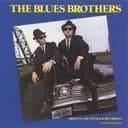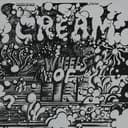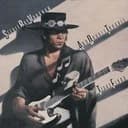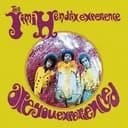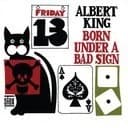The blues scale emerged from African-American musical traditions in the Deep South during the late 19th and early 20th centuries, where enslaved people and their descendants blended African musical concepts with European harmonic structures. The "blue note"—the ♭5 (A in D♯ blues)—represents a deliberate pitch ambiguity that doesn't fit neatly into Western diatonic theory. In practice, blues musicians often "bend" this note, moving fluidly between the perfect 4th (G♯) and perfect 5th (A♯), creating microtonal inflections that evoke the vocal slides and emotional expressiveness central to blues tradition. This pitch bending technique, impossible to notate precisely in standard Western notation, became a defining characteristic of blues guitar, harmonica, and vocal performance. The ♭5 interval also creates tritone tension against the root, adding dissonance that resolves beautifully when moving to either the 4th or 5th degree.
Enharmonic Equivalents and Notation
The D♯ Blues Scale is enharmonically equivalent to the E♭ Blues Scale, meaning they contain the exact same pitches but are spelled differently. D♯ blues uses sharps (D♯-F♯-G♯-A-A♯-C♯), while E♭ blues uses flats (E♭-G♭-A♭-A-B♭-D♭). In practical music-making, E♭ is overwhelmingly preferred because blues, jazz, and rock music typically favor flat key signatures, and E♭ produces cleaner notation with fewer double-sharps or awkward enharmonic spellings. Most lead sheets, chord charts, and method books will reference E♭ blues rather than D♯ blues. However, understanding both notations is valuable for musicians who encounter music written in sharp keys or who need to transpose music for different instruments. When communicating with other musicians, it's generally best to refer to this scale as "E-flat blues" to avoid confusion, though the fingerings and sound remain identical regardless of notation.
How to Use the Blues Scale for Improvisation
The D♯ Blues Scale excels in improvisation over blues progressions, particularly the standard 12-bar blues form in D♯ (D♯7-G♯7-D♯7-A♯7-G♯7-D♯7). Unlike scales that require careful note selection over chord changes, the blues scale works remarkably well over all three chords (I7, IV7, V7) in a blues progression, making it accessible for beginning improvisers. When soloing, emphasize the blue note (A) by approaching it from either direction and resolving to G♯ or A♯—this creates the signature "blues lick" sound heard in countless classic recordings. Experiment with rhythmic variations, triplet figures, and call-and-response patterns to develop authentic blues phrasing. The scale also functions effectively over dominant seventh chords in rock, funk, and jazz contexts. For more harmonic sophistication, combine the blues scale with the D♯ Minor Pentatonic or D♯ Dorian mode, switching between them to add melodic variety.
Blues Scale vs Minor Pentatonic
The D♯ Blues Scale and D♯ Minor Pentatonic Scale are nearly identical, with the blues scale containing just one additional note: the ♭5 (A). The D♯ Minor Pentatonic consists of D♯-F♯-G♯-A♯-C♯, while the blues scale adds A between G♯ and A♯, creating D♯-F♯-G♯-A-A♯-C♯. This single chromatic note transforms the scale's character from the minor pentatonic's stable, consonant sound to the blues scale's edgier, more expressive quality. Many blues and rock musicians use both scales interchangeably, treating the ♭5 as an optional passing tone or target note for emphasis. The blues scale can be thought of as "minor pentatonic plus the blue note," making it easy to incorporate into existing pentatonic-based improvisations. When practicing, start with the minor pentatonic framework and gradually introduce the A, listening carefully to how it adds tension and release to your melodic phrases.
Common Blues Progressions
The D♯ Blues Scale works perfectly over the classic 12-bar blues progression, the foundational harmonic structure of blues music. In D♯, this progression follows the pattern: D♯7 (4 bars) - G♯7 (2 bars) - D♯7 (2 bars) - A♯7 (1 bar) - G♯7 (1 bar) - D♯7 (2 bars). The I-IV-V chord movement (D♯7-G♯7-A♯7) creates tension and resolution that the blues scale navigates effortlessly, as every note in the scale relates harmonically to all three dominant seventh chords. Beyond the 12-bar form, the blues scale also works over simpler one-chord vamps (D♯7 or D♯m7 grooves), the "quick-change" blues variation (IV7 chord in bar 2), and extended jazz-blues progressions that incorporate ii-V-I turnarounds. Practice playing the scale over these progressions while emphasizing chord tones (D♯, F♯, A♯, C♯) on strong beats to create melodic lines that outline the harmony. The blues scale's versatility extends beyond traditional blues into rock, funk, soul, and even contemporary pop music that borrows from blues harmonic vocabulary.
Famous Applications and Artists
The D♯ Blues Scale (or its enharmonic equivalent, E♭ Blues) has been the secret weapon of countless legendary musicians across multiple generations and genres. B.B. King built his entire guitar vocabulary around blues scales, using minimal notes to maximum emotional effect with his signature vibrato and precise bending techniques. Eric Clapton's iconic "Crossroads" solo demonstrates the blues scale's power in high-energy rock contexts, while Stevie Ray Vaughan's "Pride and Joy" showcases its application in Texas blues shuffle rhythms. Jazz musicians like Miles Davis incorporated blues scales into modal jazz explorations, proving the scale transcends its folk origins. In rock, guitarists from Jimmy Page to Slash have relied on blues scale patterns to create memorable riffs and solos. Contemporary artists continue this tradition—John Mayer's blues-rock fusion and Gary Clark Jr.'s modern blues approach both draw heavily on blues scale vocabulary. The scale's influence extends to R&B and soul, where vocalists use blue note inflections to add emotional nuance to melodies. Understanding the blues scale connects you directly to this rich musical lineage and provides a foundation for developing authentic, expressive improvisation across multiple styles.
